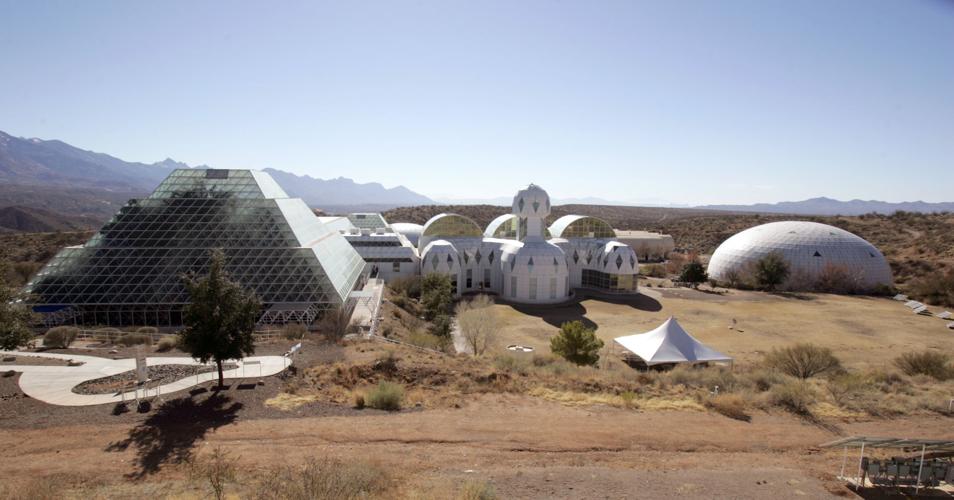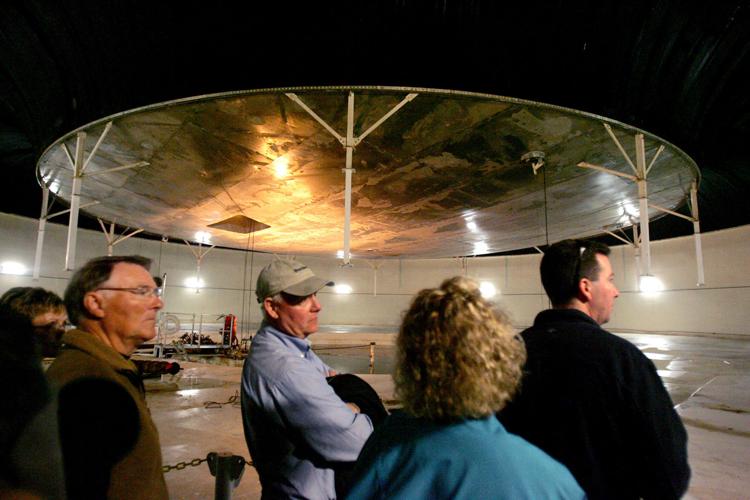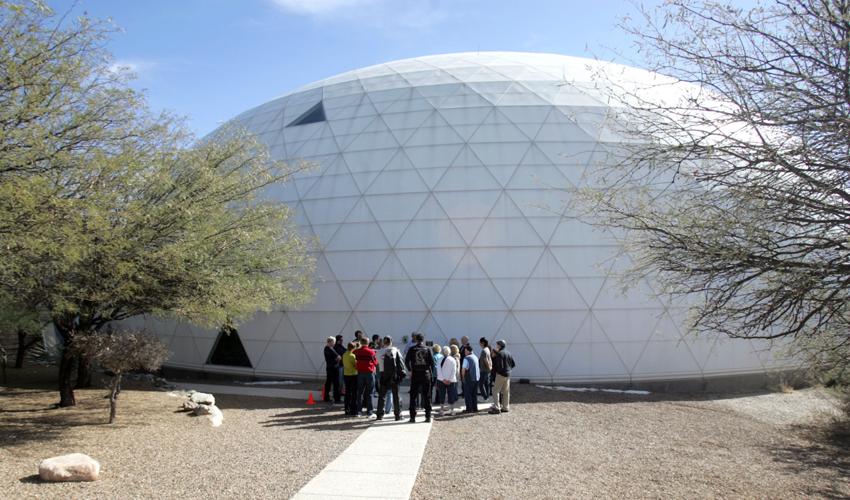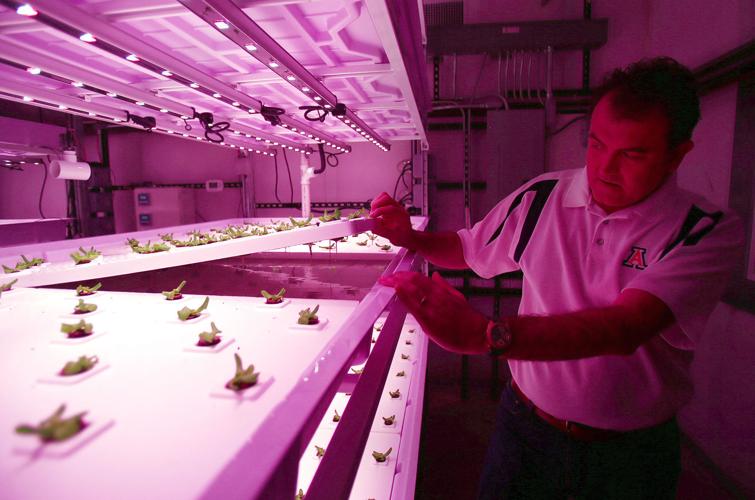Food crops are coming back to Biosphere 2, but they wonãt be planted in the 3 acres under glass at the University of ûÜÒøøÝýË research facility in Oracle.
A company named Civic Farms plans to grow its leafy greens under artificial lights in one of the cavernous ãlungsã that kept the Biosphereãs glass from imploding or exploding when it was all sealed up.
The lungs, which equalized the air pressure in the dome, are no longer needed now that the Biosphere is no longer sealed. The west lung will be transformed into a ãvertical farmã that will train LED lights on stacked racks of floating plants whose roots draw water and nutrients from circulating, fortified water.
A variety of leafy greens and herbs such as kale, arugula, lettuce and basil will be packaged and sold to customers in ûÜÒøøÝýË and Phoenix, said Paul Hardej, CEO and co-founder of Civic Farms.
People are also reading…
He also expects to grow high-value crops, such as microgreens, Hardej said.
Hardej said the company plans to complete construction and begin growing by the end of the year.
Civic Farmsã contact with the UA allows for half the 20,000-square-foot space to be devoted to production, with areas given over to research and scientific education.
The UA will lease the space to Civic Farms for a nominal fee of $15,000 a year. In return, the company will invest more than $1 million in the facility and dedicate $250,000 over five years to hire student researchers in conjunction with the UAãs Controlled Environment Agriculture Center.
Details of branding havenãt been worked out, said UA Science Dean Joaquin Ruiz, but donãt be surprised to find Biosphere Basil turning up in your salad soon.
Hardej said the ãbrandsã established by the UA were lures for his company.
ãThe UA itself has a brand recognition throughout the agricultural industry and specifically the Controlled Environment Agriculture Center. They have a lot of respect worldwide.ã
ãAlso, the Biosphere itself is a great story,ã he said.
ãThe original intent was to develop a self-sustaining, controlled environment where people could live, regardless of outside conditions.
ãIn a way, this is a fulfillment of the original purpose,ã he said.
Hardej said he recognizes the irony of growing food in artificial light at the giant greenhouse. He is convinced, however, that growing plants with artificial lighting can become as economical as growing them in sunlight.
ãDecades ago, greenhouses were very innovative. It felt like it allowed the farmer to control the environment. It did not control the light and also the temperature differentials.ã
Hardej said indoor growing allows you to control all the variables ã the water, the CO2 levels, the nutrients and the light. ãFarming is much more productive and much more predictable than in a greenhouse,ã he said.
You canãt stack plants on soil, or even in a greenhouse, he said. ãA vertical farm can be 20 to 100 times more productive. The overall direction globally is indoors,ã he said.
Indoor agriculture is still a sliver of overall crop production, said Gene Giacomelli, director of the UAãs Controlled Environment Agriculture Center (CEAC) and most indoor operations are greenhouses.
ãVertical farmsã account for a small portion of that sliver, but are a fast-growing segment for growing high-value crops with a level of control over the environment that canãt be attained elsewhere, he said.
ãTheoretically, we should be able to control everything,ã he said.
Murat Kacira, a UA professor of agricultural-biosystems engineering, is already working on systems to do that in a lab at the CEAC center on North Campbell Avenue, where he grows leafy greens and herbs under banks of LED lights. He can control the wavelengths of light, temperature, humidity, the mix of oxygen and carbon dioxide and the nutrients available to the plants.
Those variables can be tuned to improve the yield, quality and nutritional value of the plants being grown. He is developing sensor systems that allow the plants to signal their needs.
A lot of questions remain, said Giacomelli. Different plants require different inputs. Young plants have different needs than mature ones.
Air handling is a tricky problem, he said. Air flow differs between the bottom and top racks and at different locations of a given rack of plants.
It will take ãmore than a couple yearsã to figure it all out, said Giacomelli.
Kacira said the Civic Farms installation ãis a really complementary facility to the research going on under glass.ã
He expects the Biosphere to become a ãtest bedã for more research on the nexus of food, water and energy.
Ruiz said that ãnexusã is the direction for research at the Biosphere for the coming decade.



















